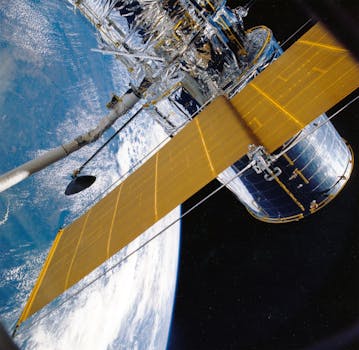From Geostationary to Low Earth Orbit: The Evolution of Satellite Telecommunications in 2023
The satellite telecommunications industry has undergone significant changes in recent years, with a shift from geostationary to low Earth orbit satellites. This article explores the evolution of satellite telecommunications in 2023, including the benefits and challenges of low Earth orbit satellites.

From Geostationary to Low Earth Orbit: The Evolution of Satellite Telecommunications in 2023
Focus Keyword: Satellite Telecommunications
Satellite Telecommunications has been a crucial part of the global telecommunications landscape for decades, providing connectivity to remote and underserved areas. The industry has undergone significant changes in recent years, with a shift from geostationary to low Earth orbit satellites. In this article, we will explore the evolution of satellite telecommunications in 2023, including the benefits and challenges of low Earth orbit satellites.
Introduction to Satellite Telecommunications
Satellite telecommunications involves the use of satellites in orbit around the Earth to transmit and receive data, voice, and video signals. Geostationary satellites, which are placed in a high orbit of approximately 36,000 kilometers, have been the traditional choice for satellite telecommunications. These satellites have a fixed position in the sky and can provide coverage to a wide area, making them ideal for applications such as television broadcasting and mobile networks. However, geostationary satellites have some limitations. They have a high latency, which can range from 200 to 400 milliseconds, due to the long distance between the satellite and the Earth. This can be a problem for applications that require real-time communication, such as video conferencing and online gaming. Additionally, geostationary satellites have a limited capacity, which can lead to congestion and reduced quality of service.
The Shift to Low Earth Orbit Satellites
In recent years, there has been a shift towards low Earth orbit (LEO) satellites, which are placed in a much lower orbit of approximately 160 to 2,000 kilometers. LEO satellites have several advantages over geostationary satellites, including lower latency, higher capacity, and improved security. The lower latency of LEO satellites, which can be as low as 20 milliseconds, makes them ideal for applications that require real-time communication. Additionally, LEO satellites have a higher capacity, which can provide faster data speeds and support more users. LEO satellites also have improved security features, such as encryption and secure transmission protocols, which can protect data from interception and eavesdropping. Furthermore, LEO satellites are less vulnerable to jamming and interference, which can be a problem for geostationary satellites.
Benefits and Challenges of Low Earth Orbit Satellites
The benefits of LEO satellites are numerous. They can provide faster data speeds, lower latency, and improved security, making them ideal for applications such as broadband internet, mobile networks, and IoT connectivity. LEO satellites can also provide coverage to remote and underserved areas, where traditional telecommunications infrastructure is lacking. However, LEO satellites also have some challenges. They have a shorter lifespan, typically ranging from 5 to 7 years, due to the harsh conditions of the low Earth orbit environment. Additionally, LEO satellites require a larger constellation of satellites to provide global coverage, which can be expensive and complex to deploy and manage.
Conclusion
In conclusion, the evolution of satellite telecommunications in 2023 has been significant, with a shift from geostationary to low Earth orbit satellites. LEO satellites have several advantages over geostationary satellites, including lower latency, higher capacity, and improved security. While there are some challenges associated with LEO satellites, such as their shorter lifespan and complexity of deployment, they have the potential to provide faster data speeds, lower latency, and improved security, making them ideal for a wide range of applications.

